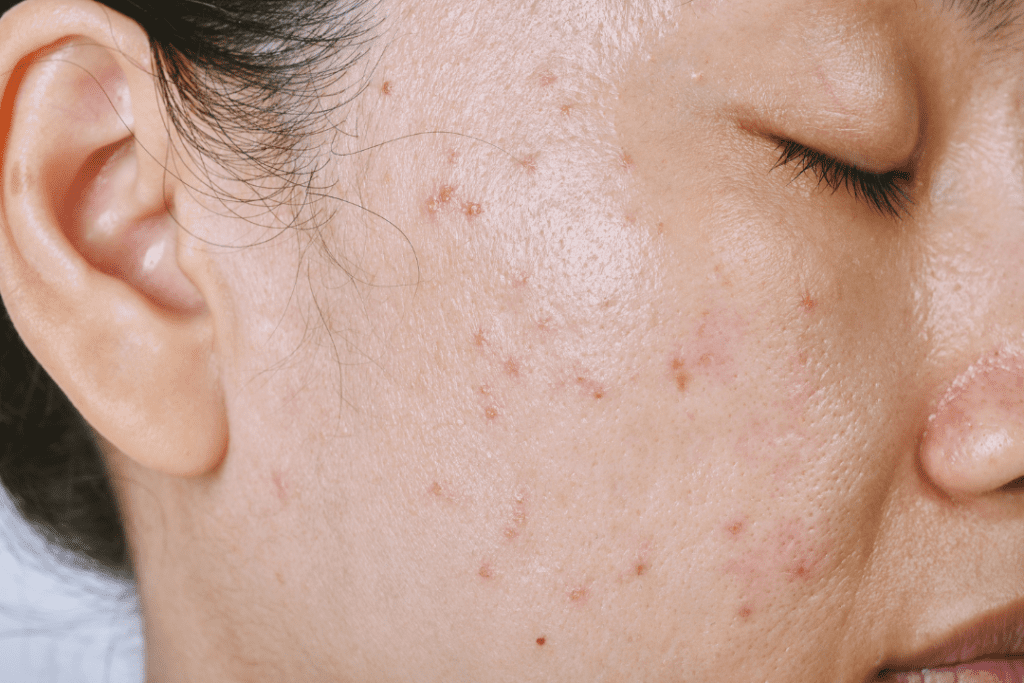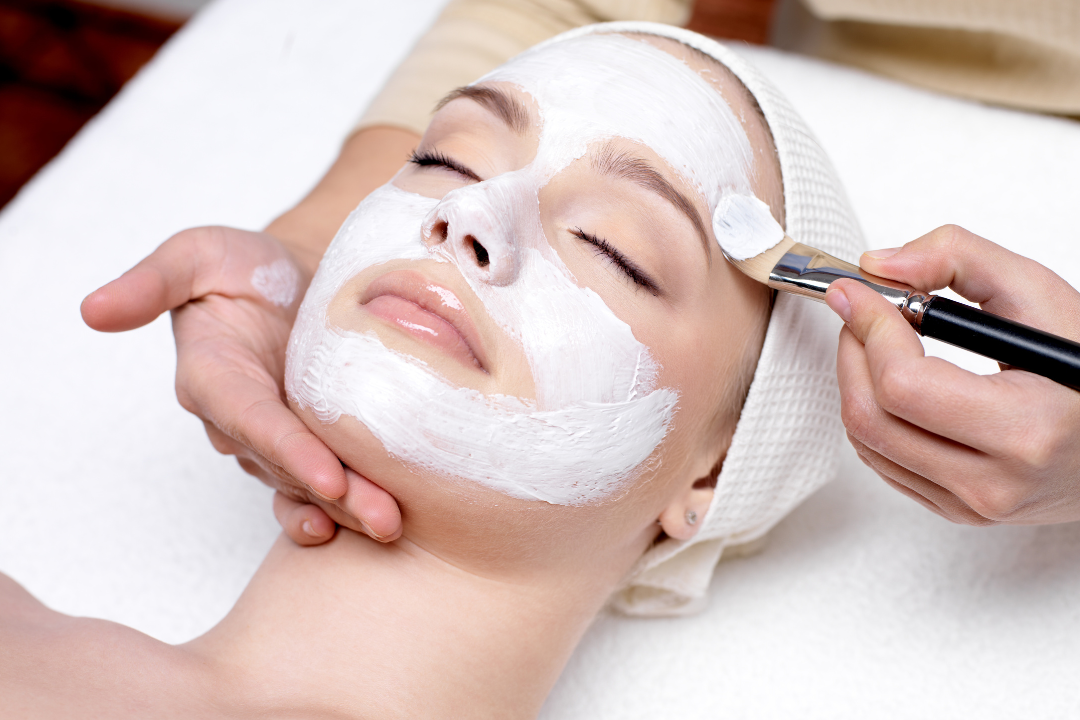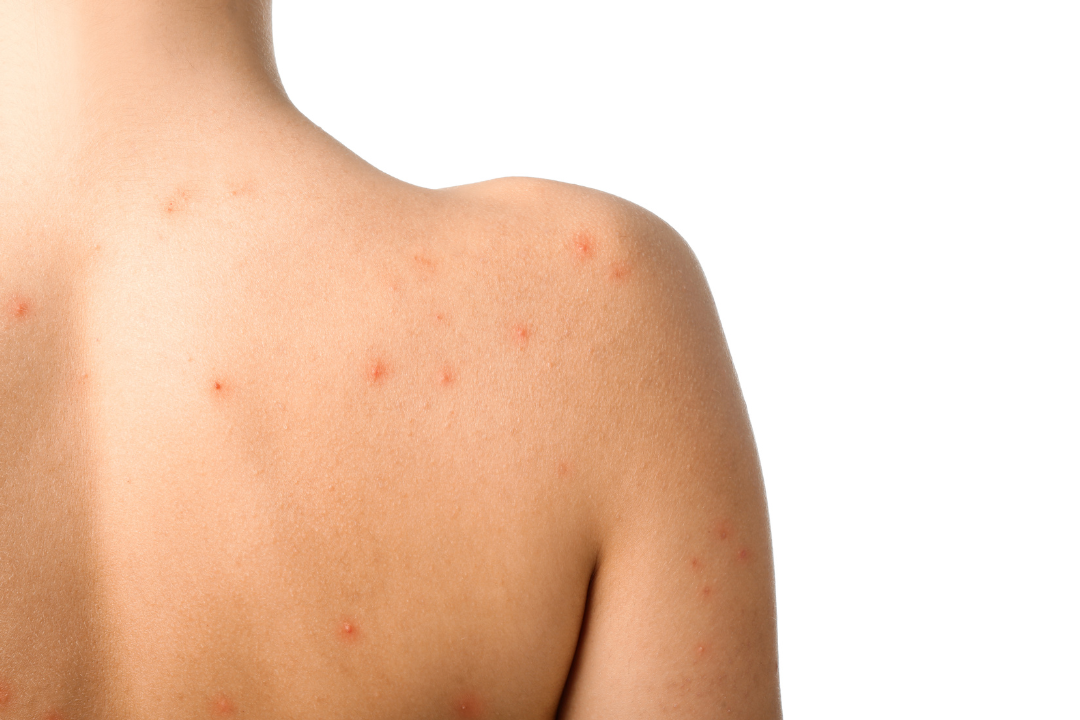Have you ever seen tiny, gray dots on your nose that won’t go away? These might be sebaceous filaments, not blackheads. This guide will explain these skin features and show you how to manage them.
Sebaceous filaments are natural structures in your pores. They help guide oil to the skin’s surface. While they’re important for skin health, they can look bad, especially if you have oily skin. Many people think they’re blackheads, which can lead to wrong treatments and skin damage.
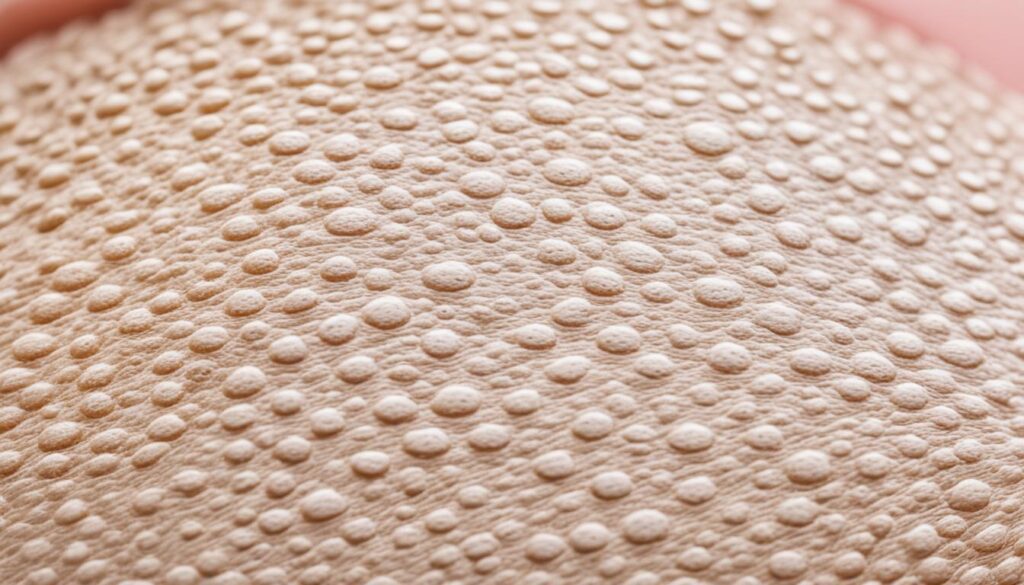
At OasisMD in Vancouver, we know how frustrating sebaceous filaments can be. Our dermatologists offer expert advice and treatments for clearer, healthier skin. We have tips for both professional treatments and at-home care.
This guide will cover the differences between sebaceous filaments and blackheads. We’ll share ways to make them less visible and help you find a skincare routine that works for you. Let’s learn how to get rid of sebaceous filaments and show off our natural glow!
Key Takeaways
- Sebaceous filaments are natural, oil-guiding structures in pores
- They’re often mistaken for blackheads but require different treatment
- Oily skin can make sebaceous filaments more noticeable
- Proper skincare routines can help minimize their appearance
- Professional treatments are available for stubborn cases
- OasisMD offers expert dermatological advice and treatments
Understanding Sebaceous Filaments: What Are They?
Sebaceous filaments are tiny, thread-like structures in your skin. They play a key role in keeping your skin healthy. Let’s explore what they are and why they matter for your skin.
Definition and Function of Sebaceous Filaments
Sebaceous filaments are like tiny tubes that line your pores. They help move sebum from sebaceous glands to your skin. This oil keeps your skin moisturized and protected.
How Sebaceous Filaments Form
They form when pores fill with sebum and dead skin cells. You might see them as small dots in light colors. Unlike blackheads, they’re normal and help keep your skin hydrated.
Common Areas Where Sebaceous Filaments Appear
Sebaceous filaments are most common in areas with lots of oil glands. The T-zone – your nose, chin, and forehead – is where you’ll often find them. These areas have bigger pores and make more sebum.
“Sebaceous filaments are essential for skin health, providing natural moisturization and protection.” – Dr. Sarah Thompson, Dermatologist at OasisMD
Learning about sebaceous filaments can help you take better care of your skin. If you’re worried about them, reach out to OasisMD at 604 630 3833 or visit us at 8138 Granville Street, Vancouver BC. We offer personalized skincare advice.
Sebaceous Filaments vs. Blackheads: Spotting the Difference
Ever noticed those tiny, gray dots on your nose? They might look like blackheads, but they could be sebaceous filaments. It’s important to know the difference for good skin care.
Sebaceous filaments are natural parts of your skin. They help oil move from the sebaceous glands to the surface. Unlike blackheads, they don’t block pores. You’ll see them as light gray or beige dots, mainly on oily spots like your nose.
Blackheads are a type of acne. They happen when pores get blocked with too much oil, dead skin, and bacteria. The dark color comes from oxidation when they’re exposed to air. Blackheads can be tough and might need special treatments.
| Feature | Sebaceous Filaments | Blackheads |
|---|---|---|
| Color | Light gray or beige | Dark brown or black |
| Texture | Smooth | Rough |
| Pore status | Open | Clogged |
| Removal | Temporary | Long-lasting |
At OasisMD in Vancouver, we’re experts in spotting and treating skin issues. If you’re not sure about sebaceous filaments and blackheads, our team can guide you. Call us at 604 630 3833 or visit us at 8138 Granville Street for personalized advice.
The Role of Sebaceous Glands in Skin Health
Your skin’s health relies on many factors, including the sebaceous glands. These small glands are key to keeping your skin balanced and safe from harm.
Sebum Production and Its Importance
Sebaceous glands make oil for your skin. This oil, called sebum, keeps your skin moisturized and acts as a shield. Without sebum, your skin would dry out, crack, and be open to infections.
Factors Affecting Sebaceous Gland Activity
Many things can change how much oil your sebaceous glands make:
- Hormones: Testosterone can boost sebum production
- Diet: Certain foods can lead to more sebum
- Genetics: Your genes might make your skin naturally oily
- Age: Sebum production often goes down as you age
Link Between Oily Skin and Sebaceous Filaments
If your skin is oily, you might see more sebaceous filaments. These small, hair-like structures help sebum get to your skin’s surface. When there’s too much sebum, these filaments can be more noticeable, especially on your nose and cheeks.
“Understanding the link between oily skin and sebaceous filaments is key to managing both effectively,” says Dr. Sarah Lee at OasisMD in Vancouver.
For personalized advice on managing oily skin and sebaceous filaments, visit OasisMD at 8138 Granville Street, Vancouver BC. You can also call 604 630 3833 or email info@oasismd.ca for more information.
Identifying Sebaceous Filaments on Your Skin
Sebaceous filaments can be hard to spot. They are tiny and blend in with your skin until they stand out. These small dots look a bit raised on your skin’s surface.
- Nose
- Chin
- Forehead
They don’t feel rough like blackheads do. They’re smooth and usually light gray, tan, or yellowish. Knowing how to spot them is key for good skincare.
| Characteristic | Sebaceous Filaments | Blackheads |
|---|---|---|
| Color | Light gray, tan, or yellowish | Dark brown or black |
| Texture | Smooth | Rough |
| Pore Obstruction | No | Yes |
If you’re not sure about sebaceous filaments on your skin, get expert advice. At OasisMD in Vancouver, our pros can guide you. Call us at 604 630 3833 or visit 8138 Granville Street for personalized skincare tips.
The Impact of Excess Sebum Production on Sebaceous Filaments
Excess oil production greatly affects the look of sebaceous filaments. Knowing how these two are connected can help you take better care of your skin. This can make these tiny structures less visible.
Causes of increased sebum production
Many things can cause your skin to produce too much oil:
- Hormonal changes during puberty, menstruation, or pregnancy
- Genetics that make you prone to oily skin
- Using harsh skincare products that remove natural oils
- Environmental factors like humidity and heat
How excess oil affects sebaceous filaments
Too much oil in your skin mixes with dead skin cells, clogging pores. This makes sebaceous filaments more noticeable. The combination of excess oil and dead skin can also make pores look bigger. This leads to more visible filaments on your nose, chin, and forehead.
Managing oily skin to minimize sebaceous filaments
To control oil and lessen the look of sebaceous filaments, try these tips:
- Cleanse gently twice a day to remove excess oil and dead skin
- Use products labeled oil-free and non-comedogenic
- Exfoliate once a week to stop buildup
- Apply a clay mask to soak up excess oil
- Moisturize to keep your skin hydrated
For personalized advice on managing excess oil and sebaceous filaments, visit OasisMD at 8138 Granville Street, Vancouver BC, or call 604 630 3833. Their expert team can guide you to clearer, healthier-looking skin.
How to Get Rid of Sebaceous Filaments: Effective Strategies
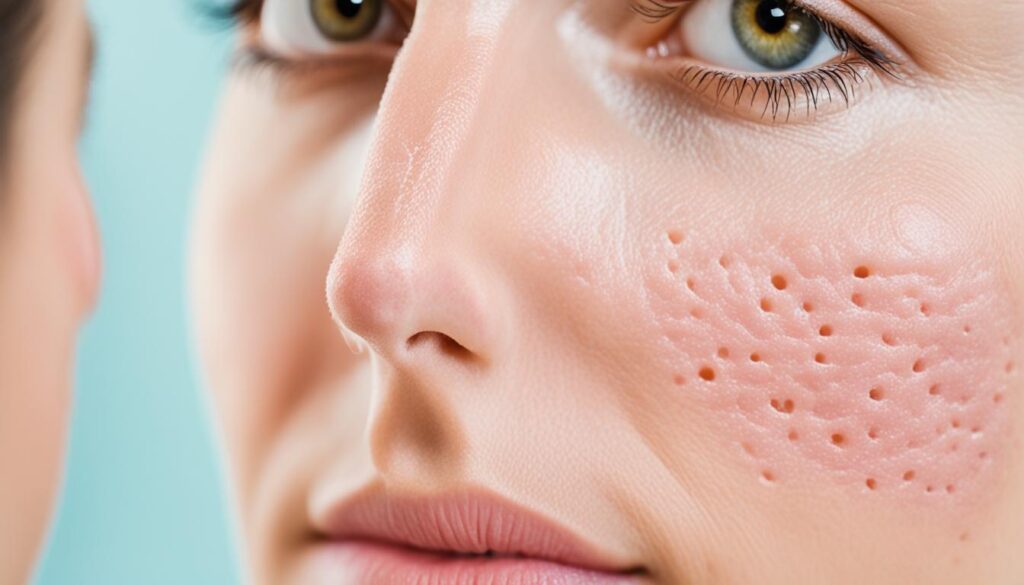
Dealing with sebaceous filaments can be frustrating, but there are ways to make them less noticeable. You can’t get rid of them completely, but you can make them less visible with good skincare habits.
Regular cleansing is key to treating sebaceous filaments. Use a gentle, non-comedogenic cleanser twice a day to remove excess oil and dirt. This helps stop pores from clogging and makes sebaceous filaments less noticeable.
Exfoliation is also important for getting rid of sebaceous filaments. Add products with salicylic acid or alpha hydroxy acids to your routine. These ingredients help remove dead skin cells and clear pores, reducing the look of sebaceous filaments.
Retinoids can really help manage sebaceous filaments. They help cells turn over and control oil production, keeping pores clear. Start with a low dose and slowly increase it to avoid any irritation.
Being consistent is crucial when fighting sebaceous filaments. Stick to your skincare routine and be patient. If you’re not seeing results, consider getting advice from the experts at OasisMD in Vancouver. They can give you personalized tips for clearer, smoother skin.
- Address: 8138 Granville Street, Vancouver BC
- Phone: 604 630 3833
- Email: info@oasismd.ca
Key Ingredients for Managing Sebaceous Filaments
Finding the right skincare products is key to tackling sebaceous filaments. Let’s look at ingredients that can help manage these skin issues.
Retinol and its benefits
Retinol is a strong tool for skin cell renewal. It clears pores and lessens the look of sebaceous filaments. Start with a small amount and slowly increase it to avoid skin irritation.
Salicylic acid as an exfoliant
Salicylic acid is great for oily skin. This acid goes deep into pores, breaking down excess oil and dead skin. Use cleansers or spot treatments with salicylic acid to focus on sebaceous filaments.
Alpha hydroxy acids for skin renewal
Alpha hydroxy acids, like glycolic acid, help renew the skin. They gently remove dead skin, reducing buildup that leads to sebaceous filaments. Try glycolic acid toners or serums for the best effects.
Niacinamide for oil control
Niacinamide, or vitamin B3, controls oil production. It makes pores look smaller and balances sebum levels. Add a niacinamide serum to your routine to keep oil in check.
At OasisMD in Vancouver, we provide personalized skincare advice for managing sebaceous filaments. Visit us at 8138 Granville Street or call 604 630 3833 to find the best products for your skin.
| Ingredient | Benefits | Best Used In |
|---|---|---|
| Salicylic Acid | Exfoliates, unclogs pores | Cleansers, spot treatments |
| Glycolic Acid | Promotes skin renewal | Toners, serums |
| Retinol | Increases cell turnover | Night creams, serums |
| Niacinamide | Controls oil production | Serums, moisturizers |
Professional Treatments for Sebaceous Filaments
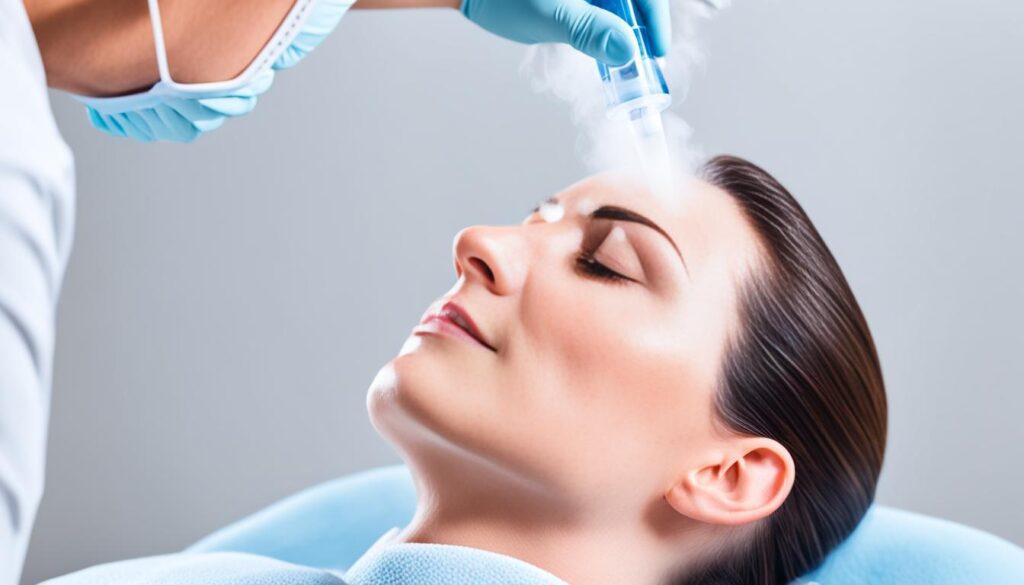
When home remedies don’t work, professional treatments can help more. A dermatologist can remove sebaceous filaments and make your skin look better.
At OasisMD in Vancouver, our experts use the latest methods to deal with tough sebaceous filaments. Here are some top treatments:
- Medical-grade chemical peels
- HydraFacials
- Prescription retinoids
- Gentle extractions
These treatments do more than just clean the surface. They deeply cleanse and exfoliate, keeping pores clear and reducing sebaceous filaments.
| Treatment | Benefits | Duration |
|---|---|---|
| Chemical Peels | Exfoliation, skin renewal | 30-60 minutes |
| HydraFacial | Deep cleansing, hydration | 30-45 minutes |
| Prescription Retinoids | Long-term pore regulation | Ongoing use |
| Gentle Extractions | Immediate pore clearing | 15-30 minutes |
Remember, professional treatments should go with a good skincare routine at home. For advice on managing sebaceous filaments, call OasisMD at 604 630 3833 or visit us at 8138 Granville Street, Vancouver BC.
Creating a Skincare Routine to Minimize Sebaceous Filaments
A well-crafted skin care routine is key to managing sebaceous filaments. By following these steps, you can keep your pores clear and reduce the visibility of these pesky skin concerns.
Cleansing techniques
Start your routine with a gentle cleanser. Double cleansing can be effective, especially if you wear makeup or sunscreen. Use an oil-based cleanser first to remove impurities, followed by a water-based cleanser to deep clean your pores.
Exfoliation methods
Regular exfoliation is crucial to remove dead skin cells and unclog pores. Chemical exfoliants like salicylic acid or glycolic acid are often more effective and gentler than physical scrubs. Aim to exfoliate 2-3 times a week, depending on your skin type.
Hydration and moisturizing tips
After cleansing and exfoliating, it’s important to hydrate your skin. Choose a non-comedogenic moisturizer that won’t clog your pores. Look for ingredients like hyaluronic acid or glycerin to lock in moisture without adding excess oil.
Sun protection importance
Don’t forget to apply sunscreen daily. Sun damage can worsen the appearance of sebaceous filaments and lead to other skin issues. Choose a broad-spectrum SPF 30 or higher that suits your skin type.
For personalized advice on managing sebaceous filaments, contact OasisMD at 604 630 3833 or visit their clinic at 8138 Granville Street, Vancouver BC. Their expert team can help you create a tailored skincare routine for your unique needs.
Common Mistakes to Avoid When Dealing with Sebaceous Filaments
Many people make mistakes when trying to manage sebaceous filaments. One common error is over-cleansing your face. This can strip away natural oils, causing your skin to produce more sebum to compensate. It’s better to stick to gentle cleansing twice a day.
Another mistake is the urge to squeeze sebaceous filaments. This can damage your skin and lead to inflammation or even scarring. Instead of squeezing, focus on consistent skincare routines to keep sebaceous filaments under control.
Using harsh physical scrubs is another no-no. These can irritate your skin and make sebaceous filaments more noticeable. Opt for chemical exfoliants like salicylic acid, which gently remove dead skin cells without causing irritation.
Skipping moisturizer is a common oversight. Even if you have oily skin, moisturizing is crucial. It helps balance oil production and keeps your skin hydrated. Choose a lightweight, non-comedogenic moisturizer to avoid clogging pores.
“Gentle, consistent care is key to managing sebaceous filaments effectively,” advises Dr. Emily Chen at OasisMD in Vancouver.
Remember, patience is vital. Quick fixes often do more harm than good. For professional advice on managing sebaceous filaments, contact OasisMD at 604 630 3833 or visit them at 8138 Granville Street, Vancouver BC.
Conclusion
Sebaceous filaments are a normal part of your skin. You can’t completely remove them, but you can make them less visible. Keeping your skin healthy is key.
This means cleaning your skin gently, exfoliating regularly, and moisturizing properly.
It’s important to find a balance on your skin’s surface. Too much oil can highlight sebaceous filaments, but removing all oil is also bad. Aim for skin that’s neither too oily nor too dry.
If sebaceous filaments bother you, get help from professionals. At OasisMD in Vancouver, our experts can suggest the best treatments for your skin. Call us at 604 630 3833 or visit us at 8138 Granville Street to keep your skin looking great.
FAQ
What are sebaceous filaments?
Sebaceous filaments are tiny, tube-like structures lining your pores. They guide sebum (oil) from the sebaceous glands to your skin’s surface. They are a natural part of your skin’s anatomy, keeping your skin hydrated and protected.
How do sebaceous filaments differ from blackheads?
Sebaceous filaments are normal and lighter in color (beige, sandy, or light gray). They don’t contain bacteria or become inflamed. Blackheads, however, are clogged pores that appear dark due to oxidation and contain excess oil, dead skin cells, and bacteria.
Why do I have so many visible sebaceous filaments?
Excess sebum production can make sebaceous filaments more visible. Hormonal changes, genetics, and certain skincare products can increase oil production. This fills pores and makes filaments appear larger and more visible.
Can I permanently get rid of sebaceous filaments?
No, you can’t permanently eliminate sebaceous filaments as they are natural. However, you can reduce their visibility with a consistent skincare routine. This includes cleansing, exfoliation, and using specific ingredients like retinol, salicylic acid, and alpha-hydroxy acids.
What ingredients should I look for to manage sebaceous filaments?
Look for retinol for cell turnover, salicylic acid for exfoliation, alpha-hydroxy acids like glycolic acid for skin renewal, and niacinamide for oil control. These ingredients help regulate sebum production, exfoliate dead skin cells, and keep pores clear, reducing sebaceous filament appearance.
Can professional treatments help with sebaceous filaments?
Yes, professional treatments like medical-grade chemical peels, HydraFacials, and prescription retinoids can help. Dermatologists may also perform gentle extractions to deeply cleanse pores and minimize sebaceous filament appearance.
What mistakes should I avoid when dealing with sebaceous filaments?
Avoid over-cleansing, excessive squeezing or extracting, using harsh physical scrubs, and neglecting moisturizer. These actions can irritate your skin, increase oil production, and make sebaceous filaments more noticeable. Instead, focus on a gentle, consistent skincare routine tailored to your skin’s needs.

